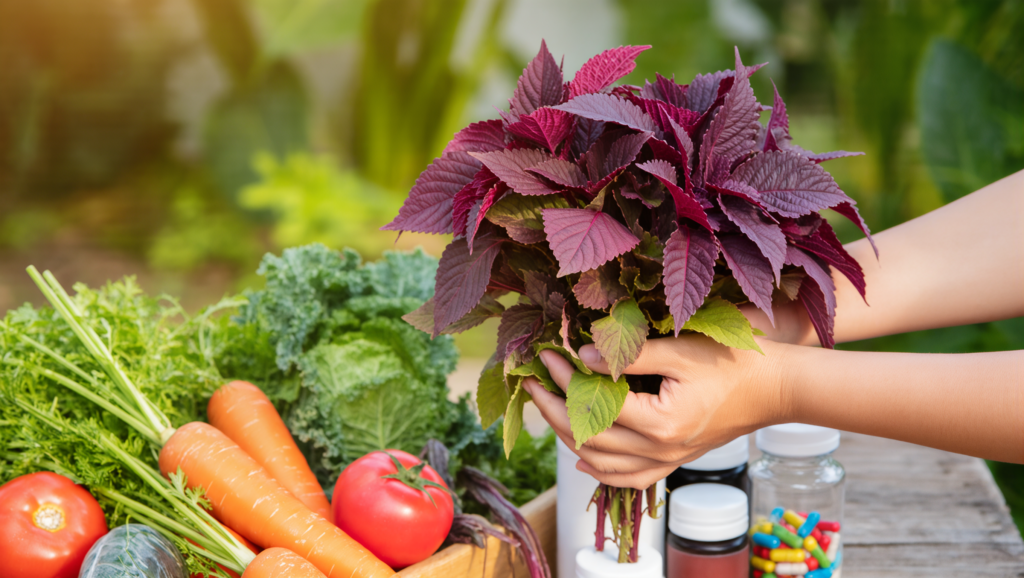Kale has spent years at the top of the leafy green charts—beloved by wellness fanatics, nutritionists, and Instagram influencers. But what if there’s a humble vegetable that’s even more nutritious, yet illegal to sell or grow in parts of the United States? The answer is amaranth leaves, a centuries-old supergreen that often gets banned or treated as a weed. Let’s dig deep into the surprising story of amaranth, why it’s sidelined, and how it stacks up against kale in nutrition and health benefits.
What Is Amaranth—and Why Is It “Illegal”?
Amaranth is a family of plants native to almost every continent, cultivated for its leaves and grain for thousands of years. Its leafy greens are used around the world—in Africa, India, the Caribbean, southeast Asia, and Latin America—but in the US, amaranth (also known as “pigweed”) is often classified as an invasive weed. Despite being highly nutritious, some states treat all amaranth species as agricultural pests due to their fast spread and competition with major crops. Because of these regulations, certain varieties of amaranth are restricted, making it difficult to sell or grow them commercially—even as urban gardeners and global foodies celebrate their health credentials.
Amaranth Leaves vs. Kale: The Unbeatable Nutrition
Let’s get right to the facts. Kale is a nutrition all-star, but cooked amaranth leaves offer a broader nutritional profile—for fewer calories.
Amaranth Leaves Nutrition Facts (Cooked, 1 cup):
- Protein: 2.8g
- Calcium: 276mg
- Iron: 3mg
- Magnesium: 73mg
- Potassium: 846mg
- Vitamin A: 3656 IU
- Vitamin C: 54mg
- Vitamin K: 319 mcg
- Folate: 75 mcg
Kale Nutrition Facts (Cooked, 1 cup):
- Protein: 2.5g
- Calcium: 177mg
- Iron: 1.1mg
- Magnesium: 29mg
- Potassium: 299mg
- Vitamin A: 885mcg (approx. 2960 IU)
- Vitamin C: 29mg
- Vitamin K: 1062 mcg
- Folate: 19mcg
Key Nutrient Wins for Amaranth:
- More iron, potassium, magnesium, calcium, and folate than kale
- Higher vitamin C and competitive vitamin A
- Similar or slightly lower vitamin K than kale, but still among the highest of all greens
Amaranth also delivers higher levels of zinc, copper, manganese, and B vitamins compared to kale, offering better coverage for many essential minerals.
What Makes Amaranth Leaves a Supergreen?
- High in Complete Proteins: Amaranth leaves offer a full amino acid profile, including lysine—a rare find in most greens.
- Rich in Antioxidants: Amaranth is rich in antioxidants, packed with polyphenols, flavonoids, and vitamins C and A, amaranth greens help the body fight inflammation, oxidative stress, and slow cellular aging.
- Supports Heart, Bone, and Blood Health: Potassium, magnesium, calcium, iron, and vitamin K together help lower blood pressure, improve bone strength, promote healthy blood, and enhance skin health.
- Immune Boost: High vitamin C and folate content support immune system function and tissue regeneration.
- Gut Health Power: Both the seeds and leaves are high in fiber, supporting regularity and digestive wellness.
Why Is Amaranth Banned or Restricted?
- Invasiveness: Some species (especially wild pigweed) are so vigorous that they throw US crop rotations out of whack, crowding out soy, corn, and other cash crops.
- Confusion: Many farmers, regulators, and seed suppliers don’t distinguish the edible, cultivated amaranth from its weedy cousins, causing blanket bans.
- Outdated regulations: Prohibitions often come from laws written decades ago, ignoring the vegetable’s nutritional and health potential.
Despite these hurdles, amaranth remains a staple in international grocery stores and thriving urban gardens across North America.
How Amaranth Is Celebrated Worldwide
- Africa: Used in popular dishes like sukuma wiki for iron-rich nutrition.
- India: “Chaulai saag” is a summer staple, often stir fried or added to dhal.
- Caribbean: Featured in “callaloo,” a national dish in Jamaica and Trinidad.
- Latin America: Revered by the Aztecs, who ate both leaves and seeds.
- Asia: “Bayam” is used in soups, curries, and stir fries.
How to Eat Amaranth Leaves
- Sautéed or steamed as you would spinach, collard greens, or kale
- Added to soups, curries, omelettes, or rice dishes
- Mix with other greens for a nutrient and flavor boost
Flavor is mild and less bitter than kale. Even the seeds can be enjoyed as a gluten-free pseudo-grain!
Should You Seek Out Amaranth?
If you’re out for intense nutrition, variety, and global flavor, amaranth leaves are worth hunting down at ethnic grocers, farmers’ markets, or growing them yourself (where legal). If local rules restrict cultivation, you can often find callaloo or bayam in international aisles.
The Bottom Line
Amaranth leaves are a true supergreen—more nutritious than kale by several measures—yet are illegal or restricted in some parts of the US due to outdated weed control laws and agricultural confusion. Where available, they’re a powerful addition to any diet: richer in iron, magnesium, potassium, calcium, folate, complete protein, and antioxidants. If you’re lucky enough to find them, don’t let this secret veggie slip through your fingers!








